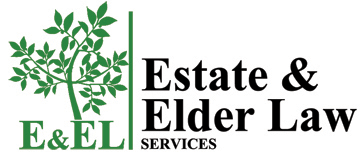March 2021 Newsletter

From The Certified Elder Law Attorney's Desk:
William W. “Bill” Erhart
It Is Too Late Baby
Medicaid Planning
This is the first of several parts discussing Medicaid planning. It is no secret the cost of long-term care in America is the greatest threat to the economic well-being of most Americans. There are only three ways to pay for long-term care: Private long-term care insurance; private resources; and after you have spent all your money and are broke; Medicaid. However, just like tax planning, we can do long-term care planning. As we search the tax code for deductions and techniques to save money on income, estate, and gift taxes, we can also research the Medicaid laws for strategies and tactics to mitigate or avoid the forced impoverishment required by long-term care Medicaid.
Medicaid breaks into three epochs in terms of opportunities for planning. There is the immediate need for long-term care crisis planning. That is what some lawyers call crisis planning for long-term care, such as being placed in a nursing facility and spending $12,000 to $14,000 a month for nursing home care immediately. The second is no immediate need, such as when one may reasonably have one or two years to plan before needing long-term care. And finally, there is what we call True Planning, when one has three, four or hopefully five years before long-term care Medicaid is needed.
We are going to start by discussing long-term care planning in its purest sense, what is commonly called the Medicaid Asset Protection Trust or the MAPT. The MAPT is a form of irrevocable trust that has been used in estate planning for many years. The formal name is the Intentionally Defective Grantor Trust and its several variations. It has been adapted from estate tax planning to Medicaid planning. This is a tried-and-true technique that we and thousands of other elder law attorneys have used for decades with success.
The essence of the technique is to create an irrevocable asset protection trust, which we call, because we like to call things by words that describe what they do, a Medicaid Asset Protection Trust or a MAPT. This is an irrevocable trust, meaning a trust that the trust maker cannot change the trust. The trust maker makes a completed gift into the MAPT, which the trust maker does not have the power to take back. The trust maker is not the beneficiary of the MAPT. Once one is past the Medicaid statutory five-year lookback, the assets conveyed into the MAPT cannot be attributed to or counted against the trust maker who may now apply for long-term care Medicaid. This is a big step. It is a complicated one. But works very well. It is a good plan if the trust maker has good people to help make it work.
One may wonder why complicate things by using a MAPT. After all, if one makes an outright gift to an individual, a child or a trusted friend, to own and hold, won’t that have the same effect as transferring the property into a MAPT? Outright gifts are simple, can be done with minimal costs, including preparing and recording deeds, and gift tax returns. Many financial institutions have their own documents for changing ownership so that the one making the transfer can do so simply.
The problem is that all human beings have legal liabilities. Children get married, divorced, die, get sued, have motor vehicle accidents, enter bad business deals, get into problems with the IRS, are pulled into bankruptcy, or simply spend the money on other things other than their parents who gave it to them for safekeeping.
But the MAPT is an asset protection trust. The MAPT does not get married or divorced, drive a motor vehicle, is not involved in business deals, should not have problems with the IRS, will not get pulled into bankruptcy, and certainly will not spend money on anything or anyone other than what the trust maker, who created the MAPT, designed it for. The chief advantage of the MAPT is that the trust maker has control over it. Among the other advantages of the MAPT are:
- Asset protection from future creditors of beneficiaries;
- Preservation of the IRC § 121 exclusion of capital gain upon sale of a principal residence;
- Preservation of the step-up of tax basis upon death;
- Ability to select whether the trust maker or the beneficiary of the trust will be taxed on trust income;
- Ability to decide who will receive the income earned by the trust;
- Ability to make the trust assets exempt in regard to a beneficiary’s eligibility for government benefits, such as Medicaid and Supplemental Security Income (SSI);
- Ability to determine the terms, incentives, access and use of a beneficiary’s trust assets;
- Ability to decide which beneficiaries will receive what, if anything, of remaining trust assets once the trust maker dies;
- Ability to determine who will receive any of the trust assets after the death of the initial beneficiaries; and
- Possibly avoiding the need to file gift tax returns based upon transfer of assets into the MAPT.
In the next several weeks we will review each of the potential benefits. Each one depends upon the specific language selected in designing and drafting a MAPT. A trust maker has many choices in deciding what terms and benefits to insert in their own MAPT. The process acquires careful planning and drafting to take full advantage of the potential benefits. And of course, this newsletter is just an introduction to the MAPT and is not a drafting guide. Estate & Elder Law Services is here to discuss any of these issues for you at your convenience.
